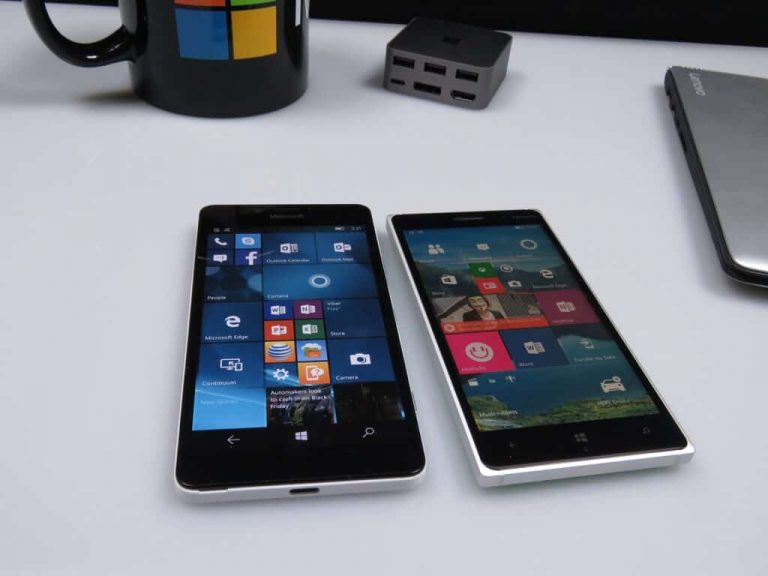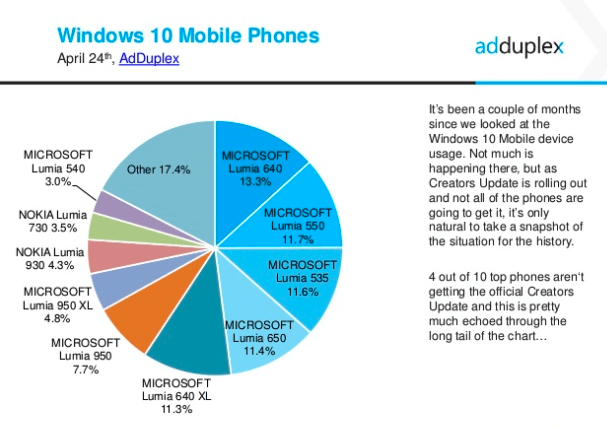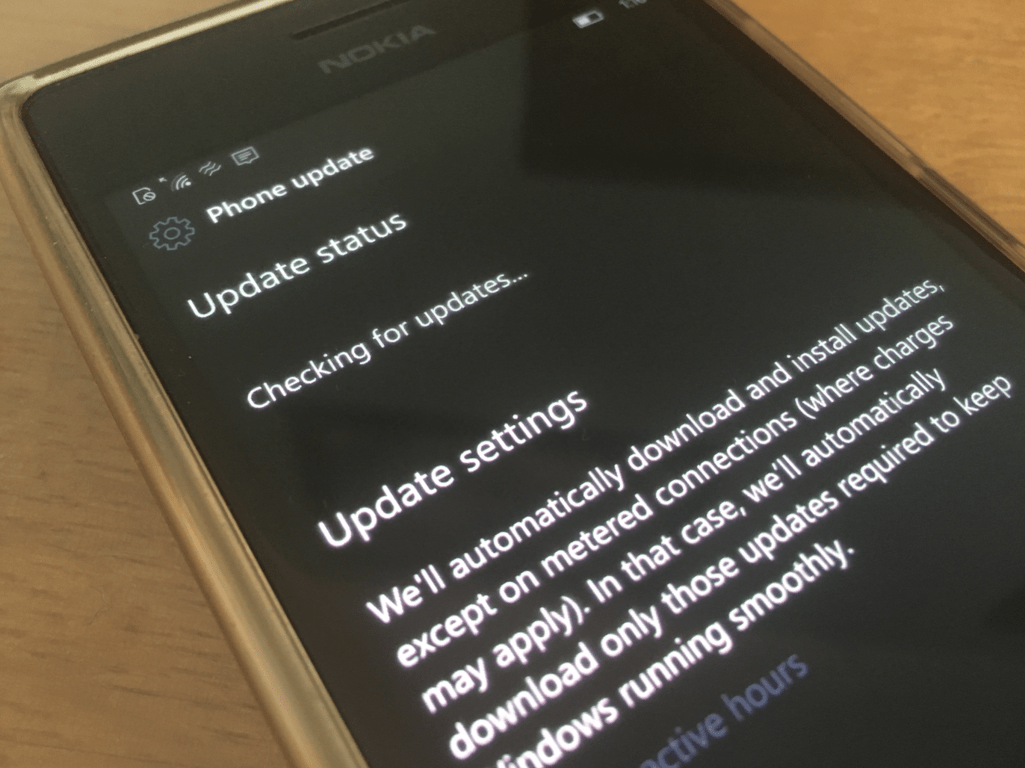As you may know, Windows Phone is in an very poor state as of today. Yes, the OS is still supported and Microsoft keeps releasing new builds at a regular pace, but the Windows 10 Mobile Creators Update was a dissapointment and there are obviously no better news on the hardware front right now.
Windows Phone has pretty much become the new Blackberry, but there is no denying that there is still a hardcore fanbase that is not ready to move to greener pastures yet. A few years ago, Microsoft’s mobile OS was definitely more attractive when iOS and Android had started become a bit boring: Windows Phone had shiny Live Tiles, it ran much better on low-end hardware, and you could even argue that it did some things much better than its competitors (remember the “Smoked by Windows Phone” series of videos?)
However, Live Tiles, the “Metro” design language and colorful Lumias didn’t ultimately matter with consumers, who voted with their wallets for iOS and Android handsets. Things did not get better with Windows 10 Mobile, which somewhat moved away from what made Windows Phone so distinctive in the first place (the People Hub and the Pivot UI are two examples).
If you’re being realistic, it has become very hard to recomment a Windows phone to anyone in 2017: the Windows Store is still missing many popular apps, the Lumia brand is dying and more importantly, Microsoft seems much more focused on its desktop OS right now. That doesn’t mean that Windows 10 Mobile has become completely irrelevant though. The OS now seems to be mainly targeted at business users, but there are still some features that make it a great OS for some consumers (and of course, die-hard Windows fans).
Many of you probably still consider Windows Phone as the best of iOS and Android: it’s more customizable than iOS, and the curated app store and better software support can also be reassuring compared to what you find on Android these days. Overall, despite all the negative talk lately, we have many reasons to still love Windows Phone in 2017:
The Home Screen
Nearly 7 years after the initial launch of Windows Phone 7, we still think that Microsoft nailed how to design to best smartphone home screen. Live Tiles remain much more useful and pleasant to look at than a boring grid of icons, and the addition of different sizes and a transparency option (not for all apps, sadly) make it very fun to create something that looks very unique.
It’s also very nice to be able to pin certain parts of your favorite apps right on your home screen, like OneNote notebooks, OneDrive folders or Groove Music playlists. Unfortunately, it’s up to the app developers to implement this level of flexibility in their apps, but when it’s there, this is clearly one of Windows Phone’s killer features.
The Dark and Light themes
We admit it, the black theme is probably much more popular than the white theme, and this is probably the one that Microsoft uses in nearly all of its Windows Phone marketing shots. Not only is the dark theme much easier on the eyes, but it also looks really great on phones that have an AMOLED screen, such as the Lumia 650, 950 and 950 XL.
Yes, some Android handsets also let you choose between different themes, but it’s probably not as consistent as something that is built in the OS. Dark theme looked pretty futuristic back in 2010, and it’s still one of our favorite Windows Phone features to this present day.
Good performance on low-end hardware
Back in 2013, Nokia announced the Lumia 520 at Mobile World Congress, and the cheap handset quickly become Windows Phone’s breakthrough device in Europe and other markets. With just a Snapdragon S4 dual-core processor, 512 MB or RAM and 8GB of storage, the Lumia 520 quickly became one of the most popular Windows phones worldwide, and for good reason.
If you already used a Lumia 520, you may know that performance and battery life were incredible for a smartphone at this price point, and this was something that you couldn’t easily find in the Android world back then. And no, you didn’t need to kill background apps or use obscure memory cleaner apps on Windows Phone 8 to maintain an acceptable level of performance.
Following the release of the Lumia 520 (and its other variants such as the Lumia 521 and 525), it seems that the cheap Lumias pretty much dominated the Windows Phone market, and this didn’t change much as of 2017: according to AdDuplex’s latest data, the top 5 Windows 10 Mobile phones worldwide are currently the Lumia 640, the Lumia 550, the Lumia 535, the Lumia 650 and the Lumia 640XL.
If you use one of these, you’ll probably agree that Windows 10 Mobile still runs great on low-end hardware. As a consequence, it was quite a disappointment to see that the Creators Update is not officially available for old mid-range handsets such as the Lumia 730 and 830 (and don’t get us started with the high-end Lumia 930 and 1520).
Better integration with Microsoft services
This is something that is slowly becoming less relevant as Microsoft’s apps have become ubiquitous, but if you rely on Microsoft services in your every day life, then it really makes sense to use a Windows phone. After logging in with your Microsoft account, you’ll find all your content in apps like OneDrive, OneNote, Groove, Movies & TV and Photos. And as a matter of fact, these two last apps are one of the few Microsoft apps that have not been ported to iOS and Android yet.
There are still not a lot of synergies between Windows 10 Mobile and Windows 10 right now, but two are worth mentioning:
- If you use the Skype UWP as your default messaging app, you can use the SMS Relay feature to send and receive text messages from your Windows 10 PC.
- You can also sync all your notifications on your PC with Cortana (you can also do it with the Cortana app on an Android phone).
Good software support and regular updates to native apps
This is where Microsoft almost replicated what Apple achieved with iOS software updates: if you use an unlocked Windows 10 Mobile handset, then you can expect to get software updates much more frequently than what you would have with an Android handset (even a high-end one like the Galaxy S8). We’re now getting used to receive minor updates every month (the Patch Tuesday cumulative updates that bring security fixes and general improvements) and feature updates once or twice per year.
In addition, nearly all native apps (except Microsoft Edge or Cortana) are Windows Store apps that Microsoft regularly improves with software updates. It’s also worth repeating, but the Windows Store is a curated app store, which means that you don’t have to worry about malware or viruses messing with your phone.
Does Windows Phone still have some killer features?
If we still love our Windows phones for all the reasons stated above, it’s still hard to single out one specific killer feature. As you saw, we didn’t mention Continuum, which is still very much a work in progress. Even Skype, a service that could have become a true iMessage/FaceTime competitor, is not deeply integrated into Windows 10 Mobile. As some of you who recently abandoned the platform may know, you can’t really go wrong with either iOS and Android: you’ll have all the apps you need, and Microsoft’s own apps are often much better on both platforms.
Windows Phone is still a good OS overall, but the lack of really distinctive features, developer support and killer hardware have made it irrelevant in today’s mobile market, wether you like it or not. That doesn’t mean that you should stop using it immediately though: if Windows Phone still fits your needs, then you should keep using it until it stops giving you satisfaction.
There is a lot of negativity around Windows Phone as of now, but we know that there are still many die-hard fans that will keep using it no matter what. We definitely want to know your feelings about Microsoft’s mobile OS: do you think it still does things better than iOS or Android today, even if Windows 10 Mobile is probably not as refreshing as Windows Phone 7/8 were back in the day? Let us know the main reasons why you keep using Windows phones in the comments below.







